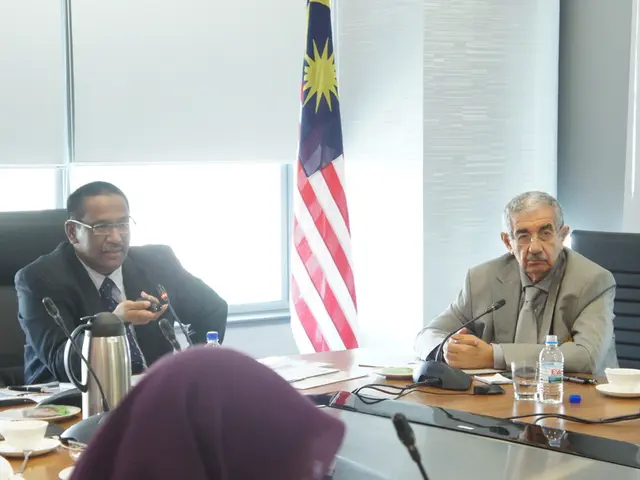Aviation authorities redirect airborne TAP flight bound for New York.
Porto-Departing TAP Flight Safely Lands at St. John's After Incident
A Portuguese airline source confirmed that flight TP211, bound for Newark, New York, touched down "safely" at St. John's International Airport on Monday night (Portuguese time), following an incident involving cabin air quality. Details regarding the resumption of the flight were not immediately known.
According to FlightRadar, the TAP Airbus A321 departed from Porto and reached its destination at 10:46 p.m., local time. The airline did not elaborate on the nature of the issue, but in a statement released earlier, TAP acknowledged that situations related to cabin air quality, which encompass odors, fumes, or smokes, are "events that have long demanded global attention from operators and manufacturers in the commercial aviation sector."
Such occurrences with strong or unpleasant odors within the cabin could be attributed to several sources, including odors in the ventilation system (antifreeze, electrical or ventilation failure, engine oil or fuel) or items in the cabin/cockpit (hand luggage, cleaning products, disinfectants, or pest control products). It is worth noting that most of these odors identified on board are not necessarily associated with substances that may cause physiological reactions, according to TAP.
The airline further stated that they monitor such events continuously and meticulously, adapting mitigation measures to eliminate occurrences. The emphasis was placed on the fact that TAP has always been attentive to these episodes, even though they constitute a residual percentage among all flights, contributing to the airline's persistent efforts to address concerns and seek industry solutions.
The Office for the Prevention and Investigation of Aircraft and Railway Accidents (GPIAAF) reported 1,249 similar occurrences in the European database in 2024. These instances have been the subject of ongoing attention by the industry, investigation bodies, and the European Aviation Safety Agency (EASA).
Industry standards and practices for addressing cabin air quality issues revolve around regulatory guidance, technological applications, and ongoing challenges. Improving ventilation and air filtration systems, monitoring and data tracking, and engaging in regulatory initiatives are key aspects of these efforts. However, as pointed out by a 2025 EASA campaign, broader cabin safety issues, including air quality, require continuous attention. The challenge of odors and airborne contaminants, particularly from sources such as engine oil fumes, continues to prompt calls for stronger ventilation standards and improved filtration technology in commercial aviation.
- Despite the incident involving cabin air quality on TP211, a Portuguese airline's flight from Porto to Newark, the general news about the safe landing at St. John's International Airport remains noteworthy.
- The airline industry has long been grappling with events related to cabin air quality, as suggested by the 1,249 similar occurrences reported by the Office for the Prevention and Investigation of Aircraft and Railway Accidents in the European database in 2024.
- In line with lifestyle changes and increased travel, addressing general-news subjects such as cabin air quality incidents, accidents, and regulatory improvements for commercial aviation has become a focal point for events and discussions worldwide.






